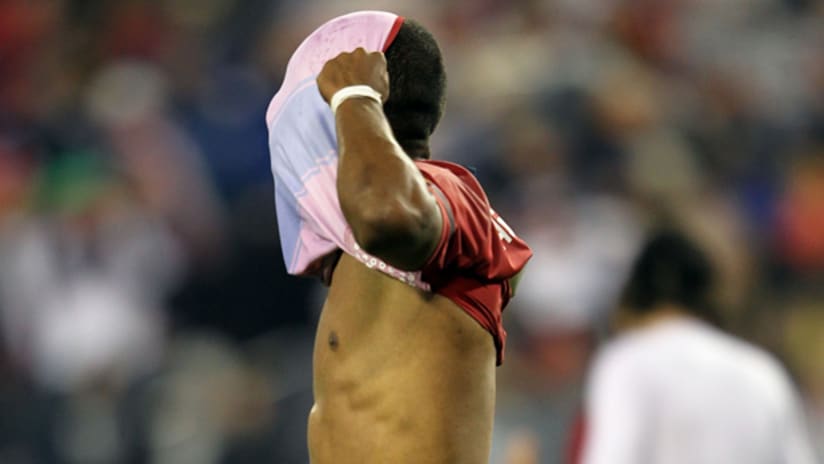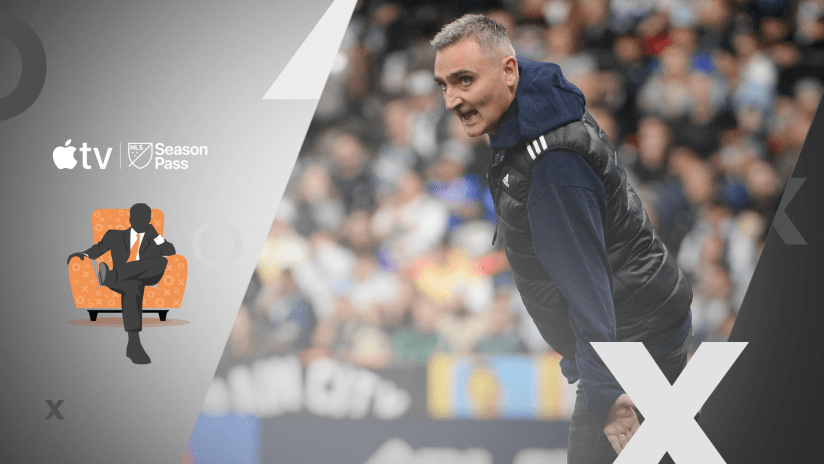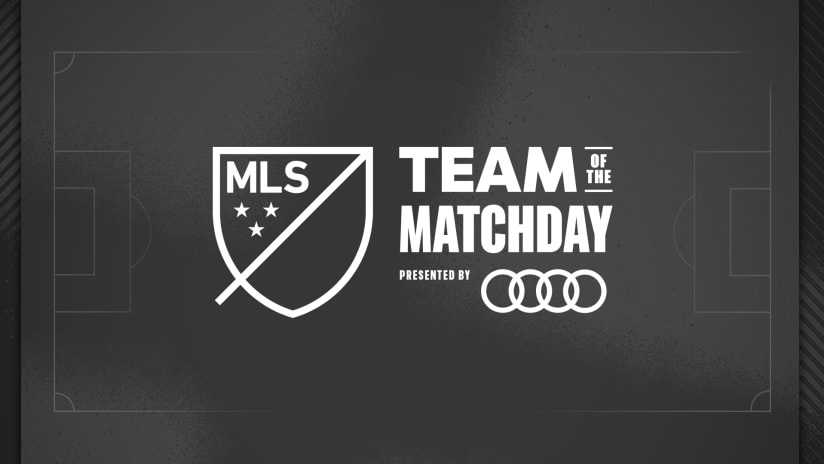First we’re going to look at why the US team is in a rut, and how that came to be. Then we’ll look at the numbers – be forewarned, they are grotesque – that the past 15 months have produced.
The main problem with the US team: There’s no center forward.
I’ve praised Jozy Altidore in this space before for his willingness to do the donkey-work of knocking-down headers, making unselfish passes and drawing fouls, all of which proved invaluable in the World Cup. His vision has improved by leaps and bounds, as has his strength on the ball.
[inlinenode:332588]Jozy, however, is still not an instinctual No. 9. He looked far more comfortable against Argentina and Paraguay drifting out to the flank than he did getting into the mix in the final third. His default off-the-ball run in that final third, assuming he’s central, is to drift toward the penalty spot.
The same, frustratingly, is true of Juan Agudelo. They both make midfielder’s runs instead of forward’s runs, which frequently leaves the US with up to five players on the same axis of attack.
This sets off a cascade of spacing problems, chief among them that nobody’s going near-post to draw defenders. The result is that not only are the forwards swarmed, but so are the midfielders who crash the penalty area with late runs that, in the past, have produced goals.
The elimination of that near-post threat not only makes it harder for Altidore and Agudelo to score, but also it minimizes the threat of guys like Landon Donovan Clint Dempsey, Maurice Edu and Michael Bradley – all of whom naturally look for that spot behind the center forward to exploit, both with club (successfully) and country (less so).
In soccer, space is king. The US, as currently constructed, create almost none.
Over the course of the two games this past week, Altidore made just one near-post run and Agudelo none – the most fundamental, necessary run for any center forward. Jozy’s came only after he’d looked up and seen where Timothy Chandler’s cross was heading, at which point he was chasing the ball instead of making the defenders chase him.
If you want an example of a properly executed near-post run, here are the highlights of the 2010 MLS Cup:
Watch: MLS Cup 2010 Highlights
The relevant part starts 4:30 into the clip and ends with Conor Casey on his backside bringing the Rapids level. It’s not pretty, but it is effective. Especially when, as Casey does, the run starts before the ball is played instead of as it’s played, thereby making the defense react to the run instead of the ball.
Another example – and if you’re a US fan, you may not want to watch – comes from Javier "Chicharito" Hernández in Mexico’s 3-1 win over Paraguay last Saturday. And pretty much every other time he plays. Off-the-ball, Chicharito is the most fundamentally sound forward to come onto the world stage since Miroslav Klose.
[inlinenode:332589]And while the world has spent the last decade deservedly glorifying the success of the forward/playmaker hybrid (Thierry Henry, Lionel Messi, etc.), a generation of attackers who want to face up with the ball instead of move without it has appeared. Chicharito and Casey – and Chris Wondolowski, Teal Bunbury and Charlie Davies, if you want to keep it local – are now the exceptions rather than the rule.
Both Altidore and Agudelo have loads of potential, both have physical gifts to make for delusions of World Cup glory among fans, but one of them has to be a No. 9 in the final third for the US to get there. It’s not impossible to learn – Edson Buddle did.
If, however, neither is able to follow Buddle's lead, then one of Bunbury, Casey, Wondolowski, Buddle or Davies, or some other center forward who’s not yet on the radar, will have to work their way into the pool for the US to once again have some attacking dynamism.
The trickle-down effect is not pretty: Over the last 20 games, stretching back to Davies’ injury, no player has scored more than two non-PK goals — not Donovan, not Dempsey, not Altidore, no one.
Onto the numbers.
Since the start of 2010, the US have played 17 times and are 5-6-6. They have scored 21 goals and conceded 24. In 12 of those 17 games – including all three this calendar year – the US have conceded the first goal.
Of the five times the US have scored first, two were 1-0 wins where the goal came in the dying minutes of the second half: the first over Algeria in the World Cup, the second over South Africa last November in a friendly.
In each of the three other games in which the US took the lead first, they gave it up at least once:
- Against the Czech Republic in a WC warm-up, it took 27 minutes. The US lost 4-2.
- Against Australia in another warm-up, it took 15 minutes. The US then reclaimed the lead after another 12 and held it for the last hour en route to a 3-1 win.
- Against Poland in a post-WC friendly, the US went in front twice. The first Polish equalizer took 15 minutes, the second 21. That game finished 2-2.
That hour – technically 59 minutes – of playing in front against the Aussies is the longest the US have held the lead in any game since July 4, 2009, against Grenada. Those two games also represent the only times in the last 44 matches the US have scored inside the first 10 minutes.
Of the 1,560 minutes the US have played since January of 2010, they’ve held the lead for a grand total of 159 minutes. They’ve trailed for 558.
Take out the Australia game and the US have led for only 85 minutes of the 1,470 for which they’ve turned out. For comparison’s sake, Mexico led for 83 of the 90 minutes against Paraguay last Saturday.
As is often the case, the most direct analysis is the correct one: The US are not much of a threat to score. Therefore, teams feel free to attack.
That’s the balance Bob Bradley needs to change over the next 10 weeks in advance of the Gold Cup. If he’s unable to do so, then the numbers above will continue to tell the story.
Matthew Doyle can be reached for comment at matdoyle76@gmail.com and followed at @MLS_analyst.














